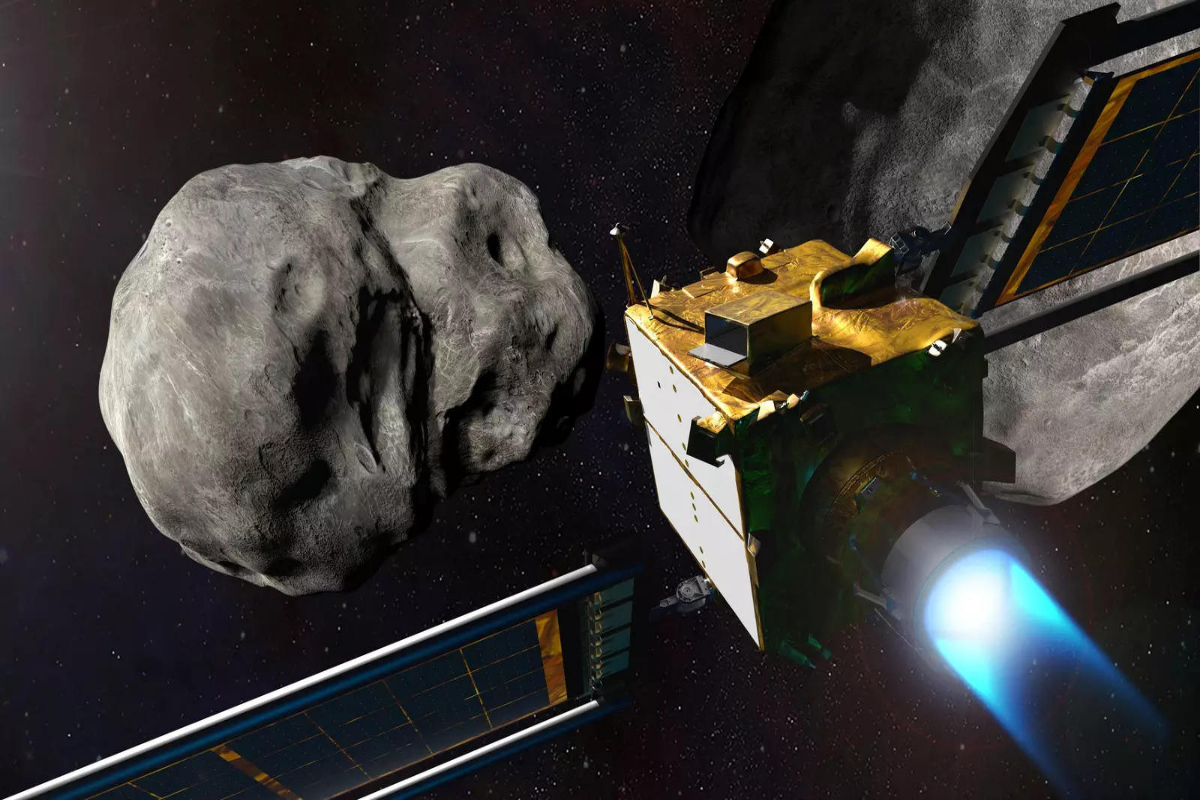- NASA’s DART spacecraft successfully collided with an asteroid on Monday night.
- The $330 million mission was designed to see if a spaceship could alter an asteroid’s trajectory just by applying kinetic force.
- The collision was the first test of a planetary defense system meant to stop an apocalyptic meteorite collision with Earth.
Ten months after DART’s launch, the National Aeronautics and Space Administration (NASA) webcast from the mission operations center outside of Washington, DC, depicted humanity’s first attempt to change the motion of an asteroid or any celestial body.
In the first test of a planetary defense system meant to stop an apocalyptic meteorite collision with Earth, NASA’s DART spacecraft successfully slammed into a faraway asteroid at supersonic speed on Monday.
The asteroid Dimorphos is about the size of a football stadium. It was 6.8 million miles (11 million km) from Earth when the cube-shaped “impactor” vehicle, barely bigger than a vending machine with two rectangular solar arrays, streaked into it at 7:14 pm EDT (2314 GMT).
Don't want to miss a thing? Watch the final moments from the #DARTMission on its collision course with asteroid Dimporphos. pic.twitter.com/2qbVMnqQrD
— NASA (@NASA) September 26, 2022
DART, which was launched by a SpaceX rocket in November 2021, was mostly piloted by NASA flight directors until the last hours of the trip when autonomous onboard navigation software took over.
The mission operations center at the Johns Hopkins University Applied Physics Laboratory in Laurel, Maryland, kept a close eye on Monday night’s bullseye strike.
The DART onboard camera’s second-by-second views of the target asteroid, which grew larger and eventually covered the TV screen of NASA’s live webcast just before the signal was lost, caused cheers to break out in the control room as it was confirmed that the spacecraft had collided with Dimorphos.
IMPACT SUCCESS! Watch from #DARTMIssion’s DRACO Camera, as the vending machine-sized spacecraft successfully collides with asteroid Dimorphos, which is the size of a football stadium and poses no threat to Earth. pic.twitter.com/7bXipPkjWD
— NASA (@NASA) September 26, 2022
The $330 million mission, which took seven years to build, was designed to see if a spaceship could alter an asteroid’s trajectory just by applying kinetic force, just far enough to keep Earth safe.
[embedpost slug=”nasa-spacecraft-are-positioned-to-collide-with-an-asteroid/”]





















